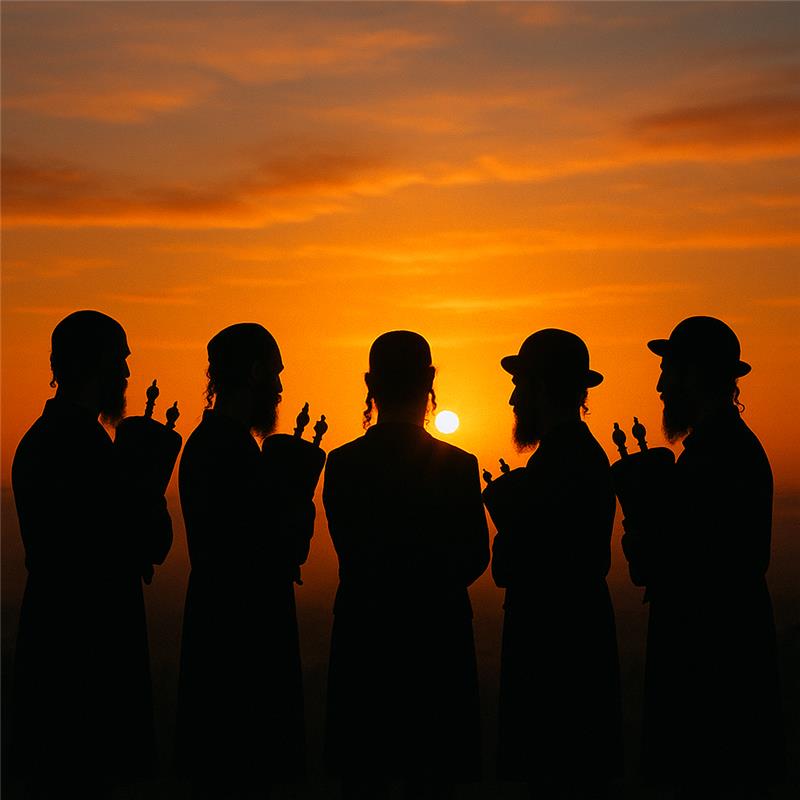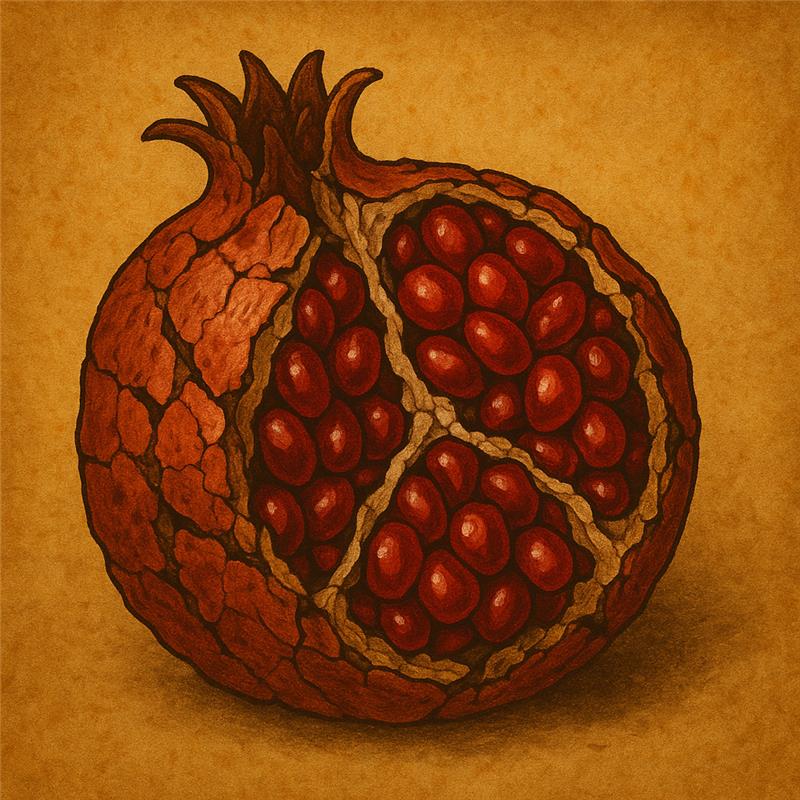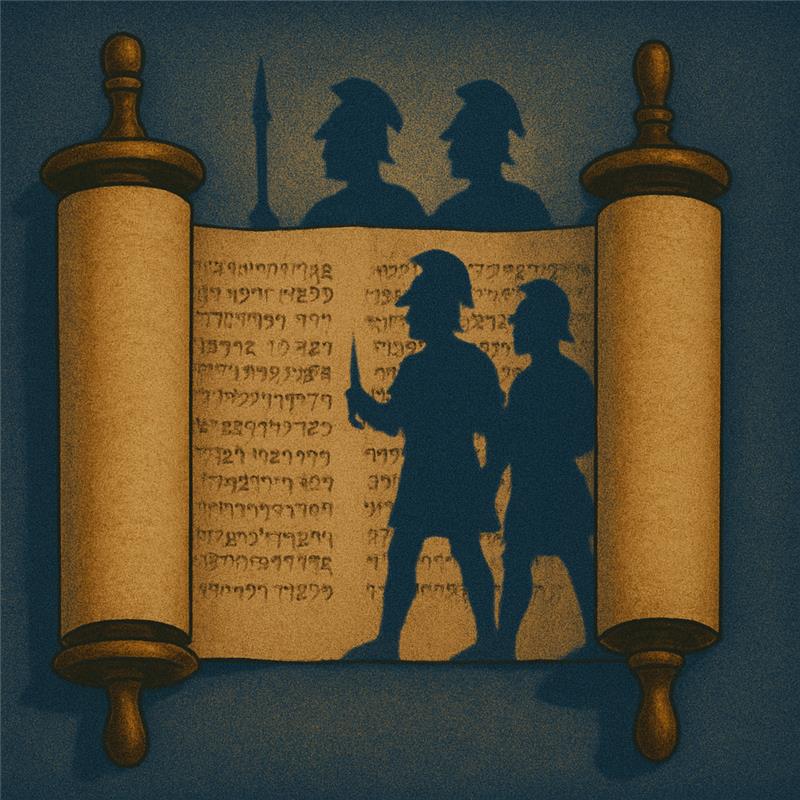Home » About Rabbi Meir » Rabbi meir biography » Rabbi Akiva’s Students: Rabbi Meir’s Unique Role Among the Five Survivors
Learn how one couple’s darkest Shabbos transformed into Judaism’s most powerful teaching on faith after tragedy.
Rabbi Meir the Illuminator: His Role Among Rabbi Akiva's Students
When we speak of Rabbi Akiva’s 24,000 students—all who died between Pesach and Shavuos—we must remember these were giants of Torah learning. Each possessed knowledge that we can barely imagine today. The Talmud (Yevamos 62b) tells us they died because “lo nahagu kavod zeh bazeh”—they did not conduct themselves with sufficient honor toward one another, according to the spiritual level expected of such great scholars. This phrase about Rabbi Akiva’s 24,000 students holds mysteries we may never fully understand.
When we speak of their test, we must remember that what seems like a simple lesson to us—showing respect—becomes infinitely more complex at their exalted spiritual level. Their challenge was not ordinary disagreement but something far more subtle: how to maintain absolute devotion to Divine truth while honoring other valid interpretations.
Rabbi Meir emerged from this tragedy as ‘the illuminator’ among the survivors, as the Talmud calls him “the illuminator” who enlightened the eyes of all sages, he transformed Jewish law forever. His story teaches us how one exceptional student—who combined brilliance with humility—could continue the sacred work after the devastating loss of 24,000. Through Rabbi Meir’s example and the meaning of Lag BaOmer, we learn that true greatness comes not just from knowledge, but from knowing how to honor others while pursuing truth.
The 24,000 Students: Understanding a Tragedy Beyond Our Grasp
How Many Students Did Rabbi Akiva Have? The Numbers Tell a Story
Rabbi Akiva had 12,000 pairs of students—24,000 Torah scholars total—spread from Gabbatha to Antipatris (in Hebrew: מגבת עד אנטיפרס, MiGabbat ad Antipatras). These locations marked the boundaries of a vast learning network across ancient Judea. Gabbatha represented the southern reaches while Antipatris stood in the north, showing how Rabbi Akiva’s influence covered the entire land. Understanding how many students Rabbi Akiva had helps us grasp the magnitude of this loss.
The number itself carries deep meaning. Twenty-four thousand matched the divisions of Kohanim and Leviim (priests and Levites) who once served in the Beis HaMikdash (Holy Temple). Rabbi Akiva wasn’t just teaching students—he was building a living Temple of Torah knowledge to replace the physical Beis HaMikdash destroyed by Rome. This spiritual structure would have transformed Judaism forever, but something went wrong that we, with our limited understanding, can only partially grasp.
The Numbers Behind the Tragedy
- Died in just 7 weeks between Pesach and Shavuos
- Stretched from Gabbatha (south) to Antipatris (north)
- Equivalent to all Kohanim and Leviim combined
- Nearly ended Jewish learning forever
Death of Rabbi Akiva's Students: A Mystery We Approach with Humility
Why did Rabbi Akiva’s students die? The Talmud’s answer—that they didn’t show proper respect to one another—seems simple, but these were extraordinary people at spiritual levels we cannot fathom. When the sages say they lacked mutual honor, they’re describing something far more subtle than ordinary disrespect. The death of Rabbi Akiva’s students teaches us lessons we’re still learning today.
Perhaps their very greatness became their challenge. Each student had such a pure, powerful understanding of Torah that accepting another’s equally valid but different interpretation felt like betraying truth itself. They weren’t being petty or mean-spirited. Their devotion to Torah was so intense that compromise seemed like corruption. Imagine loving something so deeply that you cannot bear to see it expressed differently—this may have been their test, and even these giants struggled with it.
The disease that killed them, askara (identified as diphtheria), struck during the Omer period. The Gemara in Yevamos 62b describes this as a particularly painful death, affecting the throat—perhaps measure for measure for harsh words spoken. Some suggest the “plague” was actually code for Roman persecution during the Bar Kokhba revolt. Either way, the loss of Rabbi Akiva’s 24,000 students in seven weeks nearly destroyed Jewish learning forever.
The Hidden Historical Dimension
Modern archaeology reveals another layer to why Rabbi Akiva’s students died. The tragedy occurred during the Bar Kokhba revolt (132-135 CE), when Jews made their final stand against Rome. Excavations have uncovered hiding complexes at over 350 sites, showing massive destruction exactly when the students perished.
Rabbi Akiva supported Bar Kokhba, even declaring him the Moshiach (messiah). The Gemara in Sanhedrin 97b records Rabbi Akiva saying about Bar Kokhba: “This is the King Moshiach.” After Rome crushed the revolt, Emperor Hadrian outlawed Torah study, circumcision, and Shabbos observance. Anyone teaching or learning Torah faced execution. The rabbis may have described this massacre pf the Romans as a “plague” to preserve the story while avoiding Roman censorship.
Rabbi Meir: The Exceptional Light That Survived
Why Rabbi Meir Was Called 'The Illuminator'
Among all of Rabbi Akiva’s students—both the 24,000 who perished and the five students of Rabbi Akiva who survived—Rabbi Meir possessed unique qualities. The Jerusalem Talmud (Sanhedrin 1:2) states he could provide 48 reasons to declare something ritually pure and 48 reasons to declare it impure. The Babylonian Talmud (Eruvin 13b) in some places says 150 reasons for each side. This wasn’t just intellectual gymnastics—it showed his ability to see Divine truth from every angle simultaneously.
But Rabbi Meir’s greatness transcended brilliance. His name, meaning “one who illuminates,” came because he literally brightened the understanding of every sage. The Gemara in Eruvin 13b declares that in Rabbi Meir’s generation, none could match his wisdom. Yet he learned from Elisha ben Avuya even after that teacher became “Acher” (the apostate), showing extraordinary humility and discernment. Discover more in “The Acher Dilemma” about learning from controversial teachers while maintaining proper teacher-student relationships.
The ‘Illuminator's’ Revolutionary Method
Rabbi Meir revolutionized Torah teaching by dividing his lectures into three equal parts: halacha (law), aggadah (narrative), and meshalim (parables). The Gemara in Sanhedrin 38b describes this unique approach. His teaching method showed that Torah has multiple dimensions—legal, narrative, and allegorical—all equally sacred. He composed 300 fox fables to illustrate complex concepts, making wisdom accessible to all types of learners.
The Mishnah (Sotah 9:15) states: “When Rabbi Meir died, the composers of parables ceased.” His teaching method showed that Torah has multiple dimensions—legal, narrative, and allegorical—all equally sacred. Most remarkably, the Gemara in Sanhedrin 86a rules that anonymous Mishnah statements reflect Rabbi Meir’s opinion, making him the default voice of Jewish law.
Help Continue Their Legacy Today
- Rabbi Meir - The Illuminator
- Rabbi Shimon bar Yochai - The Mystic
- Rabbi Yehuda bar Ilai - The Diplomat
- Rabbi Yose ben Halafta - The Historian
- Rabbi Elazar ben Shamua - The Educator
From Witnessing Destruction to Building Eternity
Rabbi Meir witnessed the death of 24,000 peers—brilliant scholars whose knowledge surpassed anything we can imagine today. Yet he didn’t become bitter or lose faith. Instead, he understood that survival meant responsibility. He had to preserve not just their knowledge but also learn from their test about proper teacher-student relationships.
When Rabbi Akiva gathered new students after the catastrophe, Rabbi Meir became the intellectual leader among Rabbi Akiva’s 5 students. But unlike the first 24,000, he demonstrated that honoring others’ perspectives strengthened rather than weakened his own understanding. His ability to see truth from multiple angles while respecting different approaches became the foundation of his greatness, ensuring that Torah would endure.
The Teacher-Student Relationship: Eternal Lessons
What the Tragedy Teaches About Learning Relationships
The teacher-student relationship between Rabbi Akiva and his 24,000 students appeared ideal. Rabbi Akiva himself began learning at age forty, showing that Torah welcomes all sincere seekers. He taught that “V’ahavta l’reacha kamocha” (Love your neighbor as yourself) represents Torah’s fundamental principle (Gemara Nedarim 30b). His students were spiritual giants who absorbed these teachings at the highest levels.
Yet something in the application went awry. These weren’t ordinary students who bickered over trivial matters. They were exceptional souls whose very devotion to truth made it painful to accept different interpretations. Each believed his understanding captured Torah’s essence perfectly. Their tragedy teaches that even—or especially—the greatest students must guard against letting excellence become arrogance. The teacher-student relationship requires both parties to maintain humility.
Rabbi Meir's Different Path with Rabbi Akiva
The teacher-student relationship between Rabbi Akiva and Rabbi Meir worked differently. Rabbi Meir had already studied under Elisha ben Avuya, watching a great teacher fall into apostasy. This experience taught him that even the greatest minds could err.
Rabbi Meir also understood that respecting others ultimately respects the Torah itself, which contains “seventy faces”—multiple valid interpretations. The Gemara in Chagigah 15b describes how he famously said, “Be humble of spirit before every person,” not just teachers or elders. Read about “Rabbi Meir & Rabbi Yehuda” to see how colleagues with opposing views maintained respect. This approach created the learning environment necessary for Torah’s survival.
Transform Tragedy Into Triumph
Lag BaOmer Meaning: Light from Darkness
Understanding Lag BaOmer's Deeper Significance
Lag BaOmer occurs on the 33rd day of counting the Omer, when the plague killing Rabbi Akiva’s students finally ceased. The name combines the Hebrew letters lamed (ל=30) and gimmel (ג=3), totaling 33. But why celebrate the end of dying rather than mourn the massive loss? Understanding the meaning of Lag BaOmer helps us transform tragedy into growth.
The meaning of Lag BaOmer transcends mere survival. It marks the moment when Divine mercy allowed the plague to cease and Torah learning to continue. After losing 24,000 students, Rabbi Akiva rebuilt the continuation of the Torah’s chain through five great students. This day celebrates the principle that Torah continues not through numbers but through those who combine wisdom with humility. The deeper Lag BaOmer meaning teaches us about renewal after destruction.
Lag BaOmer Meaning in English: Celebrating Renewal
The meaning of Lag BaOmer in English—”the 33rd of the Omer”—only hints at its significance. This day also commemorates the yahrzeit of Rabbi Shimon bar Yochai, one of the five students of Rabbi Akiva. Before his death, he revealed the deepest secrets of Torah (recorded in the Zohar), transforming a day of tragedy into one of mystical illumination.
Traditional Lag BaOmer celebrations include bonfires, symbolizing the spiritual light that survived when 24,000 flames were extinguished. Children play with bows and arrows, remembering both the Bar Kokhba fighters and the rainbow that never appeared during Rabbi Shimon’s lifetime (his merit alone protected the world, as stated in Gemara Ketubot 77b). Weddings resume after the mourning period, celebrating that Jewish life and learning continue despite devastating losses. Explore “Hidden Meanings: Gematria” in the mystical tradition Rabbi Shimon bar Yochai preserved.
Lag Baomer: Why We Celebrate on the 33rd Day
- Bonfires - Representing the light of Torah that survived the darkness
- First Haircuts - Three-year-old boys receive their upsherin at Meron
- Weddings Resume - Mourning practices suspended for celebration
- Bow and Arrow Play - Remembering Bar Kokhba's fighters and Rabbi Shimon's rainbow
Why This Ancient Story Speaks to Our Generation
Community Divisions Echo Ancient Challenges
Today’s Jewish world struggles with divisions that mirror what destroyed Rabbi Akiva’s 24,000 students. Different communities within Torah Judaism often struggle to see the validity in other approaches. Chassidim and Misnagdim, Sephardim and Ashkenazim, those who emphasize study versus those who emphasize prayer—each group holds precious pieces of our tradition, yet sometimes view others with suspicion rather than respect.
Just as the ancient students couldn’t accept different Torah interpretations, modern communities can fall into the trap of believing only their path is authentic. The death of Rabbi Akiva’s students reminds us that being right matters less than being united. When Jews fight among themselves, we weaken our collective strength and lose the beauty of our diverse traditions. Each approach—whether Lithuanian scholarship, Chassidic devotion, or Sephardic wisdom—adds essential colors to the tapestry of Torah.
Rabbi Meir's Living Legacy from Rabbi Akiva's Students
Just as Rabbi Meir rebuilt Torah after witnessing the death of Rabbi Akiva’s 24,000 students, Rabbi Meir Baal Haness Charities continues rebuilding lives today. When you understand how Rabbi Akiva’s students died from lacking mutual respect, you see why supporting Torah scholars who combine wisdom with proper character remains essential.
Founded in 1799, Rabbi Meir Baal Haness Charities has distributed tzedakah in Israel for over 200 years to Torah scholars, widows, orphans, and needy families. Your donation ensures that the lesson learned from the tragedy of Rabbi Akiva’s 24,000 students—the eternal challenge of balancing Torah brilliance with mutual respect—continues guiding Jewish education. Every family you support teaches both the brilliance Rabbi Meir exemplified and the humility that preserves Torah for future generations.
Carry Forward the Lesson of Rabbi Akiva’s Students
In the merit of Rabbi Meir Baal Haness, may you be blessed with wisdom, prosperity, and the joy of preserving our eternal heritage.
Frequently Asked Questions
Why did Rabbi Akiva's students die?
The Talmud (Yevamos 62b) states that Rabbi Akiva’s 24,000 students died because ‘they did not treat each other with sufficient respect’ according to their spiritual level. They died from askara disease during the Omer period. Some historians propose an alternative explanation—that the ‘plague’ was actually code for their deaths in the Bar Kokhba revolt against Rome (132-135 CE), with the rabbis using metaphorical language to preserve the story under Roman censorship. Both explanations may be true: they may have died in battle while also failing their spiritual test of mutual respect.
How many students did Rabbi Akiva have altogether?
Rabbi Akiva initially had 24,000 students (described as 12,000 pairs) who all died during a seven-week period between Pesach and Shavuos. After this tragedy, he found five new students in southern Israel who successfully rebuilt Jewish learning. These five students of Rabbi Akiva—including Rabbi Meir as the ‘Illuminator’—became the foundation of all subsequent Torah scholarship.
What is the meaning of Lag BaOmer?
Lag BaOmer, meaning the “33rd day of the Omer,” marks when the plague ceased killing Rabbi Akiva’s students. This day transforms mourning into celebration, showing how tragedy can spark renewal. The Lag BaOmer meaning in English reminds us it’s also the yahrzeit of Rabbi Shimon bar Yochai, when he revealed mystical Torah secrets before his death.
Why is Rabbi Meir considered the ‘Illuminator’?
Rabbi Meir earned the title “illuminator” because he enlightened all the sages of his generation. The Talmud (Sanhedrin 86a) states that anonymous Mishnah teachings represent his views, making him the default voice of Jewish law. His ability to see multiple valid perspectives while maintaining his own integrity exemplified the lesson learned from Rabbi Akiva’s 24,000 students’ tragedy.

 The Five Who Rebuilt Torah – The dramatic story of the five survivors
The Five Who Rebuilt Torah – The dramatic story of the five survivors
 The Acher Dilemma – Learning from controversial teachers
The Acher Dilemma – Learning from controversial teachers The Hadrianic Persecution – Historical context of the tragedy
The Hadrianic Persecution – Historical context of the tragedy Second Chances – How Judaism rebuilt after destruction
Second Chances – How Judaism rebuilt after destruction
